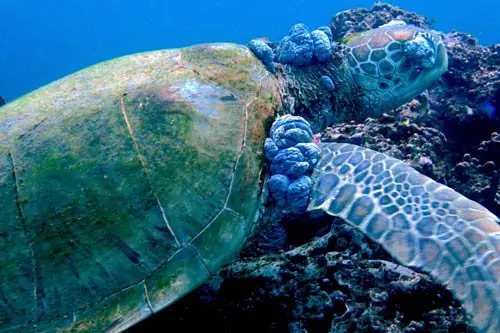How Does Pollution Affect Sea Turtles

Pollution has a devastating effect on sea turtles. These magnificent creatures are exposed to pollutants in the water, which can cause health problems and even death. In addition, pollution can contaminate the food they eat, making them sick or causing them to starve.
Moreover, polluted beaches are often unsuitable for turtles to lay their eggs, resulting in fewer turtles being born. Consequently, it is essential that we do everything we can to reduce pollution in order to protect these amazing animals.
There are many ways that pollution can affect sea turtles. The most direct way is if the turtle ingests or inhales pollutants. This can cause problems with their digestive and respiratory systems and can also lead to other health problems such as liver damage and cancer.
Pollution can also affect turtles indirectly by altering their habitat in a way that makes it harder for them to find food or mates, or by causing changes in the climate that make the ocean warmer or more acidic. These indirect effects can be just as harmful as the direct ones, and together they threaten the survival of these incredible creatures.
How Does Pollution Affect Turtles?

Credit: www.wwf.org.au
Does Air Pollution Affect Turtles?
Air pollution has a significant effect on turtles. The chemicals in the air can cause respiratory problems, skin irritation and other health issues. Additionally, the pollutants can build up in their shell, making it harder for them to move and breathe.
This can eventually lead to death.
How Does Ocean Pollution Affect Sea Animals?
How does ocean pollution affect sea animals?The effects of ocean pollution on sea animals are vast and varied. For example, oil spills can coat the fur of animals like seals and otters, leading to hypothermia.
Plastic bags can block the digestive systems of turtles and other creatures who mistake them for food. Noise pollution from ships disturbs the migration patterns of whales. And toxic chemicals released into the water can build up in the tissue of fish, shellfish and other marine life, potentially causing health problems or even death.
Sadly, all too often, these sorts of events are caused by humans carelessly disposing of waste or using harmful chemicals. This underscores the need for us to be more mindful about how our actions impact the delicate balance of marine ecosystems.
How Many Sea Turtles are Killed by Pollution?
It is estimated that between 60 and 80 percent of all sea turtles have ingested some form of plastic. This is because they often mistake it for food, as it floats in the ocean and looks similar to their natural prey. Once ingested, the plastic can block their digestive system or tear their stomach, both of which can be fatal.
In addition, when turtles eat plastic they can also ingest the toxins that are often found on the surface of the material. These toxins can build up in their system and cause serious health problems.In terms of specific numbers, it is difficult to say exactly how many sea turtles are killed by pollution each year.
However, it is clear that this is a major problem for these animals and one that needs to be addressed urgently.
Does Pollution Impact the Diet of Sea Turtles and Cause them to Eat Jellyfish?
Pollution plays a significant role in shaping the diet of sea turtles, which is exactly why turtles eat jellyfish. As plastic waste and other pollutants infiltrate the marine ecosystem, they alter the availability of food sources. With diminished fish populations, turtles often resort to consuming jellyfish as an alternative. The resemblance of floating plastic debris to jellyfish further confuses turtles, leading to ingestion of harmful pollutants and even more detrimental consequences for their health.
How Many Sea Turtles are Affected by Light Pollution?
Light pollution is a growing problem in many parts of the world. One of the animals most affected by this type of pollution is the sea turtle.There are seven different species of sea turtles, and all of them are impacted by light pollution in some way.
This type of pollution can interfere with their natural migratory patterns, nesting habits, and feeding behaviors. In some cases, it can even lead to death.It’s estimated that around 50% of all sea turtle hatchlings are disoriented by artificial lights and end up crawling towards land instead of the ocean.
This not only puts them at risk of being predators, but also means they’re more likely to die from dehydration or exhaustion before they ever reach adulthood.In addition to disrupting their natural behavior patterns, light pollution can also negatively impact sea turtles’ health in other ways. For example, exposure to artificial light at night has been linked to an increased risk of cancer in these animals.
Thankfully, there are things that can be done to help reduce the amount of light pollution in areas where sea turtles live and breed. For instance, laws can be enacted to prohibit or restrict beachfront lighting during certain times of year.
Conclusion
Pollution can have a big impact on sea turtles. They can be injured by trash and other debris in the water. Pollution can also make it hard for them to find food.
Sea turtles are an important part of the ocean ecosystem, so it’s important to do what we can to protect them.